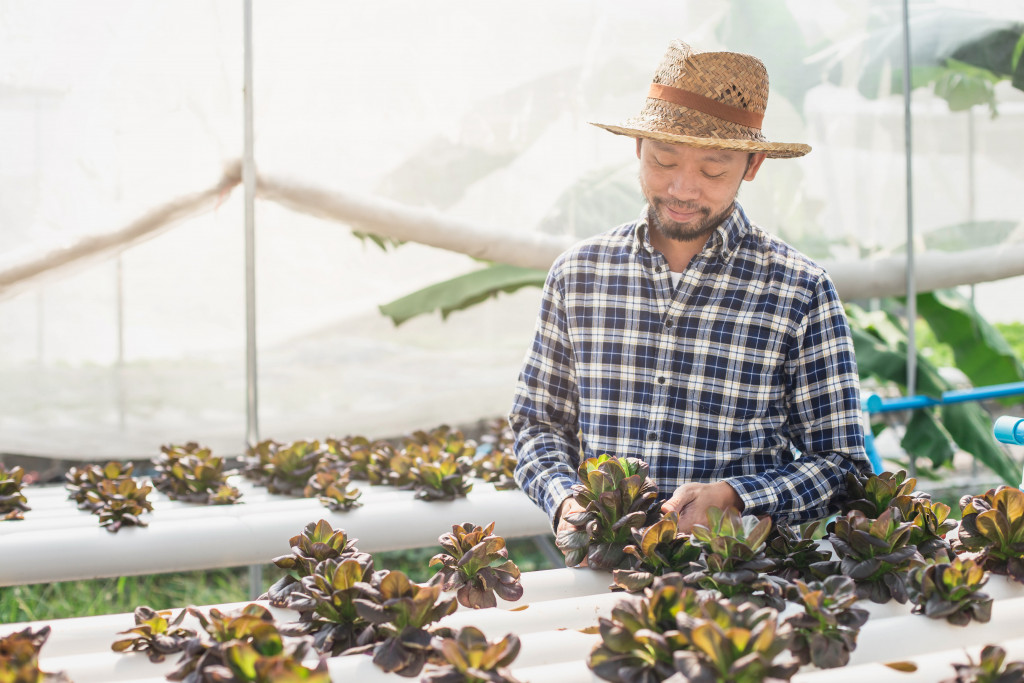The freshest produce you can have would be from your very own kitchen garden, dug up from your soil. Not only will it taste all the sweeter for the hard work and effort you put in, but it will also knock a sizable chunk off your family’s food bills. This is why many people opt to buy land large enough for all their needs.
Even if your primary incentive is not saving money by growing vegetables, there are still many advantages to growing your own produce. Not only can it be a light and fun source of exercise and vitamin D exposure, but it is also a great learning experience for children. Even teenagers can gain a lot from the effort of caring for the well-being of the plants, especially when they see the literal fruit of their labor on their plate as a meal. Additionally, by growing your own produce, you take out the impact you have on the carbon footprint it takes to transport the food from the farm to you.
Think of how much you’re helping the environment by taking the plane or the cargo train, the distribution center and its delivery trucks, the sorting center, and its delivery vehicles finally to the supermarket you would buy them from. For the climate and your pocket, do your part by planning out your very own vegetable garden today.
Location
Vegetables thrive with plenty of sunlight. It is essential to their growth and the ripening process as well. Make sure the sunny spot is large enough to allow the plants room to stretch and grow.
Produce
Some vegetables might be harder to grow in your climate. Others could take up so much space that you do not have room for other varieties. Yet more could be a lot more maintenance than a beginner can handle.
Carrots, beans, cucumbers, and lettuce are pretty easy crops that are low maintenance. Add a lovely peppermint border so you can enjoy fresh tea and have a natural remedy to keep away ants from your plants.

Condition
Before you begin planting, start conditioning your soil for a few weeks beforehand. This will prepare your soil to be a beneficial, aerated, and welcoming environment for your seeds and seedlings.
You can either get the items you need to test your soil and buy the ingredients to supplement the soil yourself or buy pre-prepared soil. If you like being precise and have the patience for it, then doing it all yourself could be very fun for you. But if all the pH levels and balancing and math required are too much for you, just buy the soul you need.
You can tell the gardening store what you want to grow and bring a sample of the soil you currently have, and they can advise you on what kind of soil to buy. Then simply dig up enough room to make a plant bed with the new soil and enjoy your gardening.
Cover
If your area has a lot of small critters that would happily eat your seeds, seedlings, or young shoots, you might want to rig up a light fence. There are plenty of attractive ways to set up a fence or an overhang so that you can protect your garden without blocking the sunlight while still keeping pests away. Using covers to keep out pests also reduces your reliance on pesticides, which will significantly relieve you. Using potent pesticides could make you averse to eating your produce as you may worry about the health effects of such food.
Plant
Check online to see if the seeds you have can be placed directly in the soil or if it is better to germinate them separately first. Make sure to follow the spacing directions the gardening store gives you, as this can help you have neat and orderly rows that do not block any new plants from receiving the right amounts of sun, water, and nutrients.
Final Thoughts
Plants do better with a light misting of water. Look into getting an attachment for your hose that allows you to spray a mist that evenly coats the plants and soil. A regular hose might spray too direct a stream, resulting in over-watering in some areas and under-watering in others.
Keep in mind that weeding will be your new hobby just as much as gardening. Get some suitable weeding gloves, firm your heart against the pretty flowers they grow, and yank them all out regularly to keep your main plants safe and growing well.
